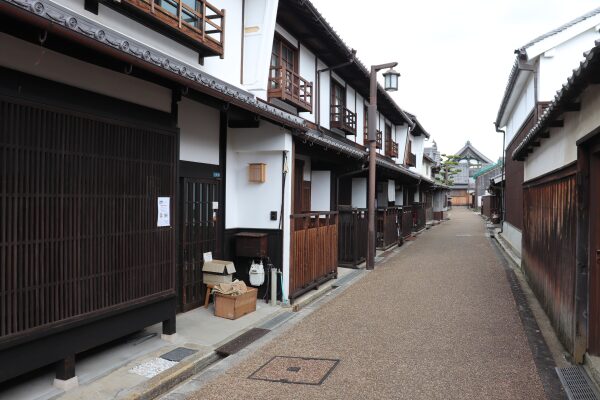Imaicho Town: Nara’s Biggest Historic District
The Kansai region is dotted with numerous temple towns, but none is as significant as Imaicho Town in Kashihara City. This enchanting town boasts a beautifully preserved landscape that transports visitors to the Edo Period.
About Imaicho Town
Imaicho Town is a historic temple town with a whooping 500 traditional buildings, many of which the Japanese government lists as important cultural properties.

Originally, Imaicho Town centered around Shonen-ji Temple, founded in 1533. This temple supported the missionary work of Hongan-ji Buddhists, who played a significant role in creating temple towns throughout the Kansai region, including Osaka. Even after the Hongan-ji sect surrendered to Nobunaga during the Battle of Ishiyama, Imaicho retained its autonomy in part thanks to its protective moats.
As the centuries drug on, many major highways passed near the town. The town developed as a commercial city along with Sakai in Osaka. At its peak, Imaicho Town issued its own currency and prospered so much that 70% of the wealth in the Yamato region (Nara) came from Imaicho Town.
Walking in Imaicho Town
Imaicho Town is a short distance from the Kintetsu Yagi Nishiguchi Station as well as the Kintetsu Yamato Yagi Station.

Once you cross the Sobu Bridge over the Asuka River you are transported to a different world. There are many traditional houses clustered within the expansive historic district. Imaicho Town spans nearly 40 acres, making it one of the largest temple towns in Japan.

Additionally, the electric poles are buried underground in this area, enhancing the feeling that you have stepped into a historical drama. As a result, Imaicho Town is frequently used as a filming location for such productions.

Hanairaka, Imaicho Town information center, located a short distance away, is a museum where you can learn about the history and townscape of the area and pick up a map too. It was originally the town hall.




Imaicho Town is a delightful place to explore, as there are very few cars, allowing you to stroll around without worrying too much about traffic. It’s surprising to see that many old houses are still in use today. While most of these traditional homes are not open to visitors, some welcome guests. A few of these homes are now cafes.
Famous Homes
As you walk through the town, pay attention to the features typical of Edo-period houses. Each home has its own unique charm. Many of these houses include a mezzanine, a common feature in traditional Japanese architecture. The mezzanine often has a small window called a Mushikomado, but the design varies from house to house.




In the west lies the home of the Imanishi Family, who played major roles in governing the town. The house, built in 1650, is a more castle-style building with joined roofs.

It is open to the public, but it seems you need to make a reservation in advance to go inside.

By the way, Imai Sokyu, one of those three great tea masters in Japan, was from here. I am sure this town was once like Sakai which had a very unique culture supported by rich merchants.


Leave a Reply